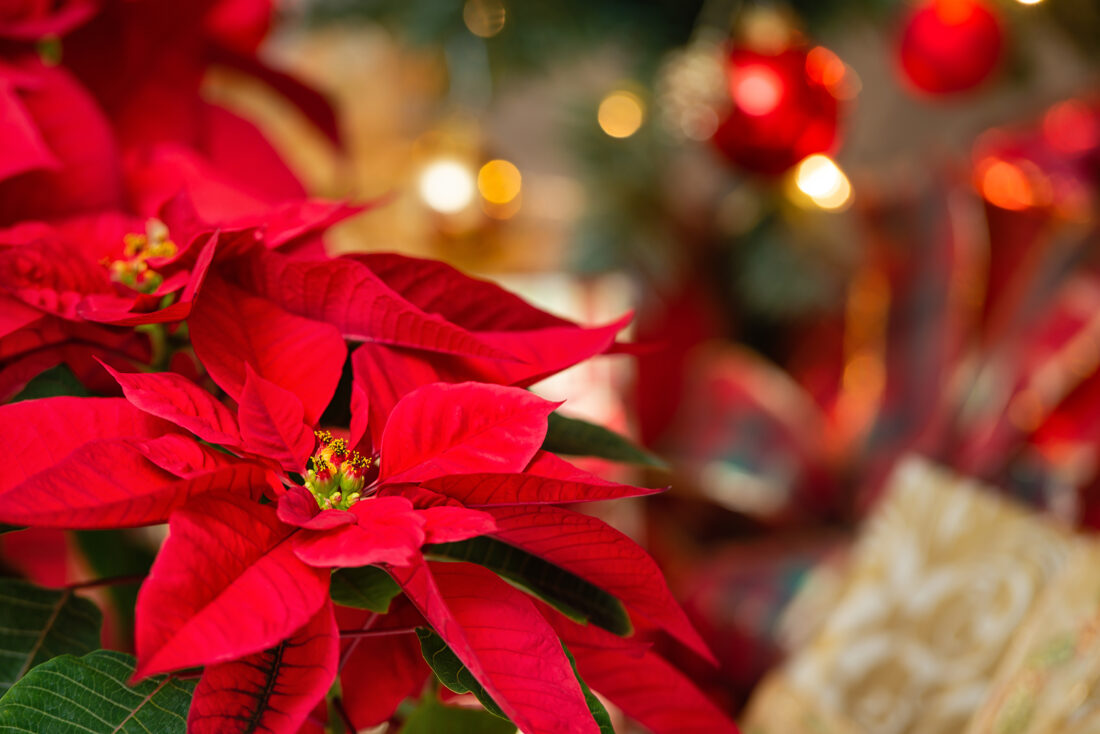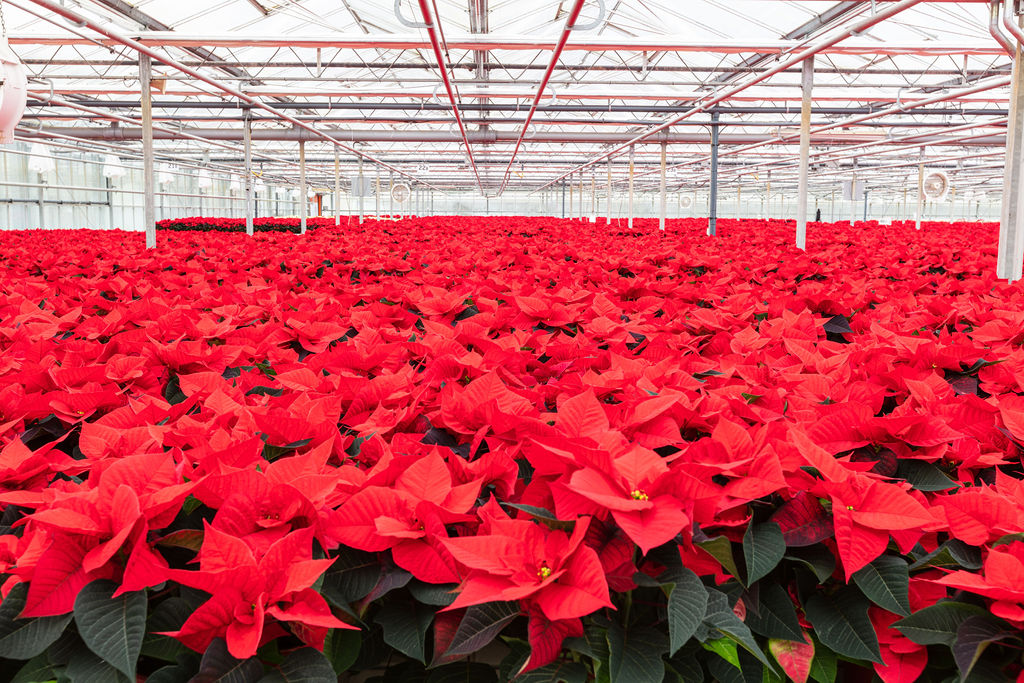Everything You Need to Know About Poinsettia Plants

The Poinsettia, native to Mexico and Central America, gets its name from Joel Poinsett, the first U.S. ambassador to Mexico, who introduced it to the United States in the 19th century. He began gifting poinsettias to friends and family at Christmas when the leaves were most red!
With over 100 varieties, these festive plants, synonymous with Christmas, bloom in various shades, from classic red to white, pink, pale green, and orange. The vibrant leafy displays are not flowers but bracts, while the poinsettia's small yellow bloom at the center completes its unique charm.
Why should people buy an Irish grown, locally sourced poinsettia from their local Woodie’s?

- When buying an Irish grown, locally sourced poinsettia you're supporting the Irish horticultural industry among which only a handful are growing poinsettia.
- An Irish grown poinsettia will ensure a much better shelf life for the final end user.
- Irish poinsettia growers are working under the Bord Bia quality mark which carries with it a very good reputation.
How poinsettias are cultivated in Irish nurseries
The poinsettia crop is the most difficult and demanding crop that we grow on the nursery. Care is needed from the minute they arrive on the nursery right the way through to delivery at the stores. This care covers every aspect from:
- Monitoring the glass house environment – the correct average 24 hour temperature must be maintained at different levels throughout the crop. Glasshouse humidity is closely monitored to help prevent disease outbreaks.
- Managing watering (as the plants should never be too dry or too wet)
- Monitoring and manging nutrition (with regular laboratory testing to ensure that certain targets are met)
- Height control has to be achieved by using a programmed growth control regime whereby the crop is sprayed from the top to help manage overall height if required in order to meet customer specification.
- At time of picking the plants are placed carefully into sleeves and then into boxes in order to avoid damage in transit.
- Poinsettia orders are stored in a special area of the dispatch where a suitable temperature is maintained.
- Plants are delivered in a truck which is heated to maintain a suitable temperature on route to the customer.

Tips for a thriving poinsettia
- Place in a suitable room where sudden changes in temperature can be avoided. A poinsettia is quite happy at 15 to 16 degrees (somewhere between 16 and 22 degrees is ideal) but when the plant goes from one extreme to another is when problems start. Keep the plant away from things like fireplaces and radiators (too warm when operating, too cold when not), drafty windows and doors etc.
- It is best to always keep some level of moisture in the pot at all times. Try to avoid watering excesses i.e. too wet (the root zone is saturated on a regular basis) and too dry (a wilted plant) as this will stress the root zone and lead to a shorter lifespan.
- When watering is required, It is a good option to sit the plant in say a basin of water (at room temperature) to allow the water to be pulled up from the bottom of the pot. The timing of this will be determined by the level of dryness.
- If you intend to keep the plant long after Christmas, give it some liquid plant food once a month.
Can you get poinsettias to re-bloom?

- If cared for properly, a potted poinsettia can last for two to three months in the home. However, it is possible for a poinsettia to survive long after Christmas and to flower again the following Christmas.
- In the springtime, prune the poinsettia back to approx. 4-6 inches high in a warm area.
- Feed and water it regularly once new growth emerges.
- In approx. mid-September, place the plant in complete darkness, for around 12 hours a day (somewhere like a cupboard or wardrobe would be ideal).
- For the other 12 hours each day, ensure the plant has plenty of bright light. At this stage a temperature of between 18°C to 20°C is ideal.
- Approximately 4 weeks on, the poinsettia bracts (top-most leaves) should start to turn red followed by complete red 8 to 10 weeks later.
- Continue to grow the plant as when you originally purchased it from here to Christmas again.